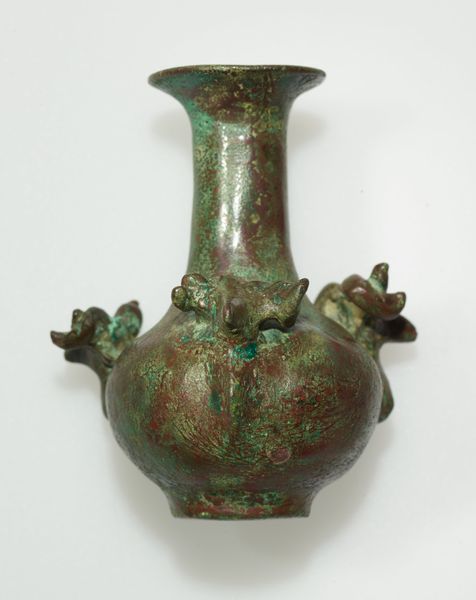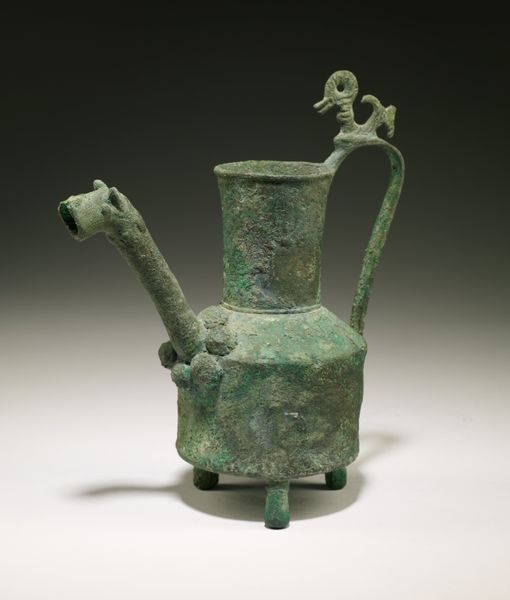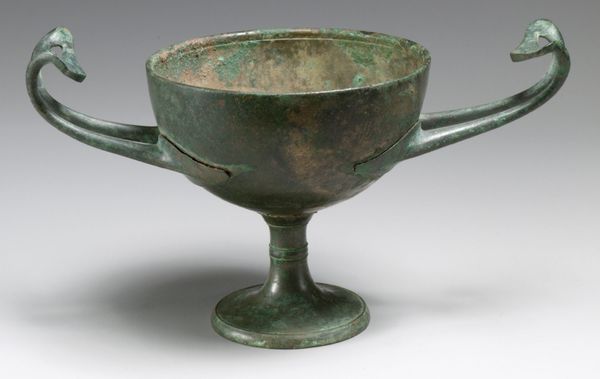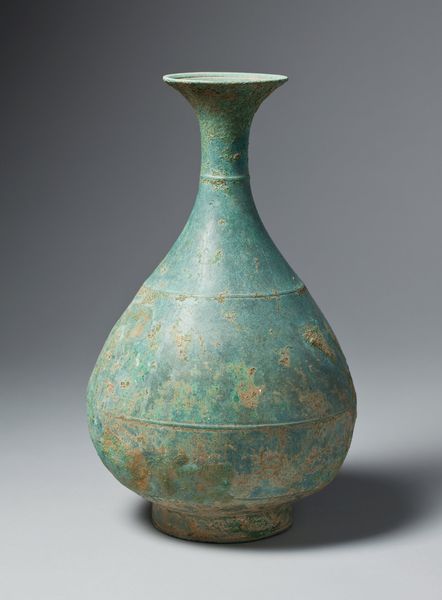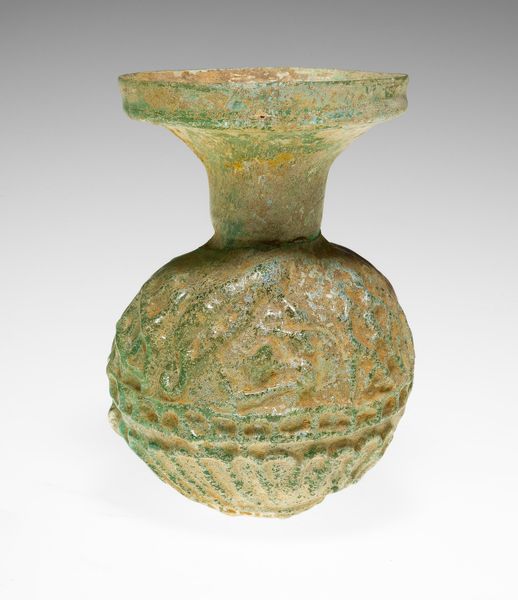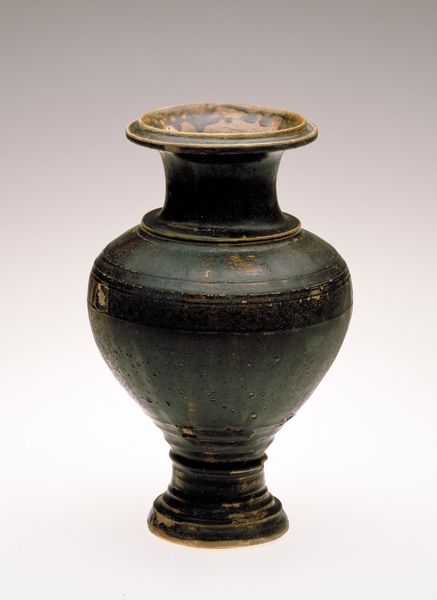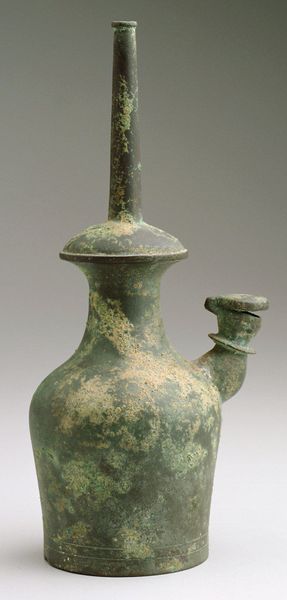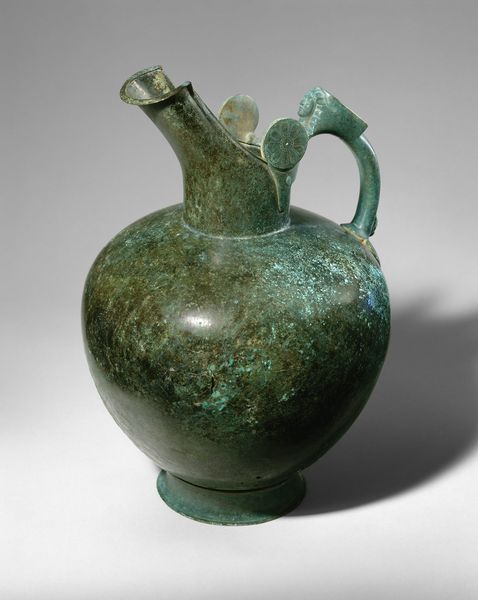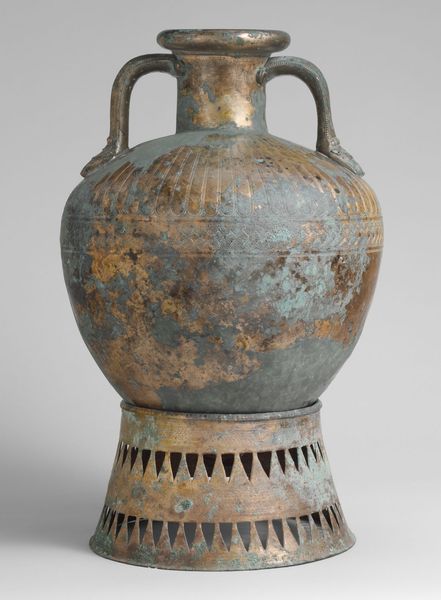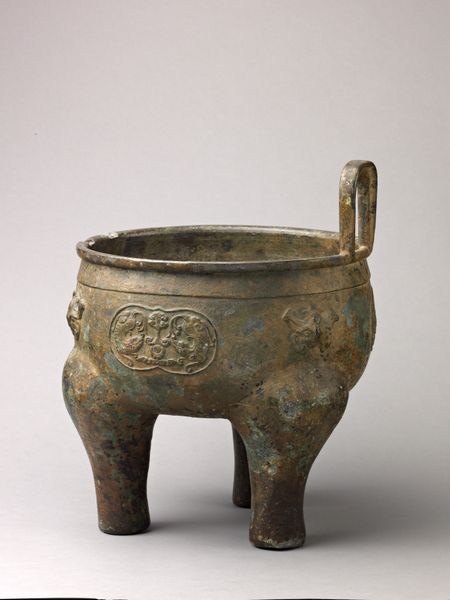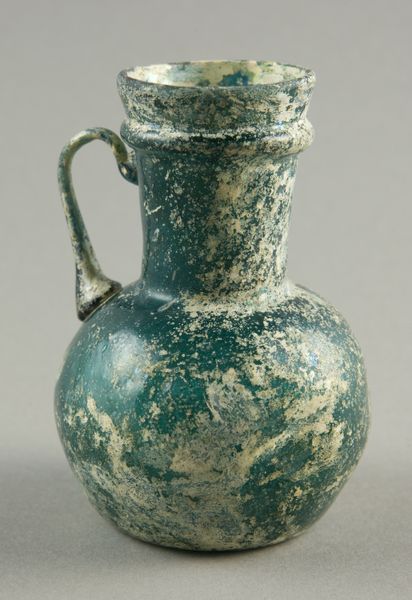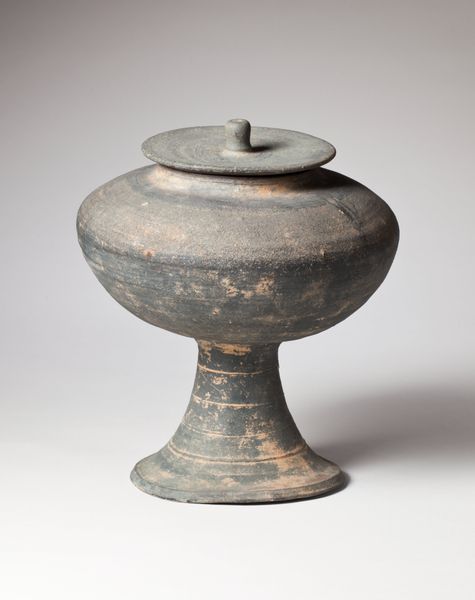
ceramic, bronze, sculpture
#
greek-and-roman-art
#
ceramic
#
bronze
#
form
#
geometric
#
ancient-mediterranean
#
sculpture
#
ceramic
Copyright: Public domain
Curator: Looking at this remarkable piece, this is a bronze hydria, a water jar, crafted around 600 BC. You can find this one at the Metropolitan Museum of Art. Editor: My first impression is one of profound weight, both literally and metaphorically. The green patina of the bronze speaks of immense age, and the overall design conveys a sense of steadfastness. Curator: Absolutely. The hydria was central to many aspects of ancient Greek life, from practical water collection to ritual uses. Consider the craftsmanship. The lion-head attachments and female masks attached to the handles elevate this piece from mere utility to a sacred object. The lion often represented strength and was sacred. The presence of the mask might also have served an apotropaic function. Editor: But who held the power in those contexts? The labor to create it, surely enslaved or poorly compensated workers. The design reflects an elite, patriarchal culture where access to clean water was probably structured by status and gender. Were women the primary carriers of water in ancient Greece? That practical dimension becomes political, doesn't it? Curator: Precisely. These symbols reflect the power structures. Note, though, the handles themselves are beautifully rendered; the shapes recall Minoan forms predating this Classical era. The hydria is like a cultural memory, literally holding the past. The circular form echoes not only other practical jars and cooking vessels, but it reflects ideas about the circle of life and the cyclical nature of things. Editor: True, the vessel's form holds a great deal of potential meaning. But its display here in the Met also affects its significance. Removed from its original context, presented as an object of art, does it become a trophy of a kind, or an invitation for intercultural empathy? Curator: Both perhaps, though its beauty persists beyond any colonial narrative. This jar connects us, across millennia, to the daily rituals and deeper beliefs of a people. The sheer artistry demands our awe. Editor: Indeed, the enduring strength of form reminds us that objects, however mundane, can become powerful expressions of social and cultural identity, so there's more to it than simple beauty. Curator: And for me, those persisting shapes suggest an ongoing need for humanity to make meaning through simple forms. Editor: A shared sentiment indeed!
Comments
No comments
Be the first to comment and join the conversation on the ultimate creative platform.
